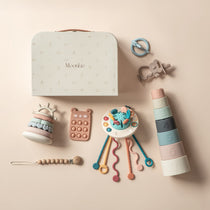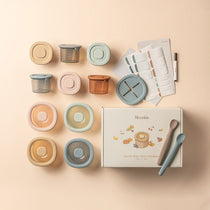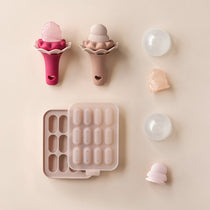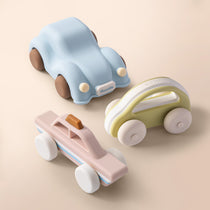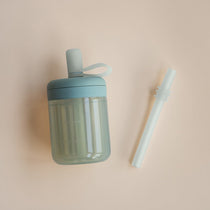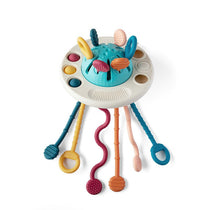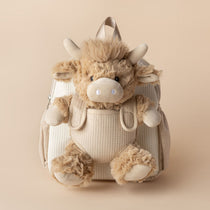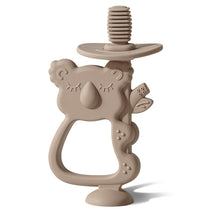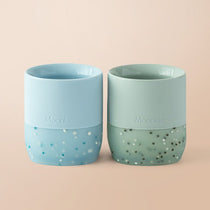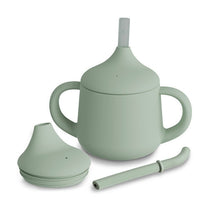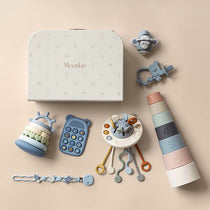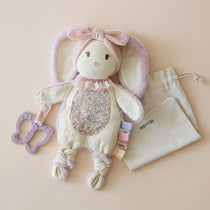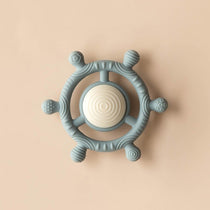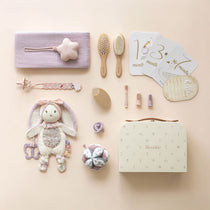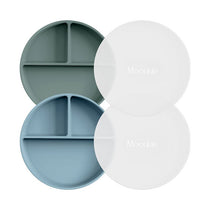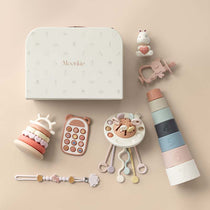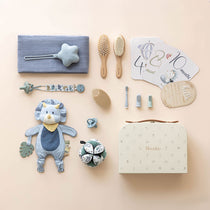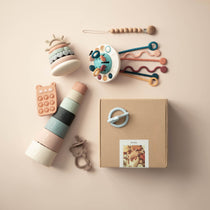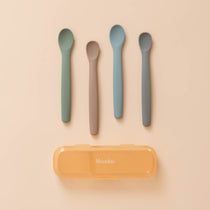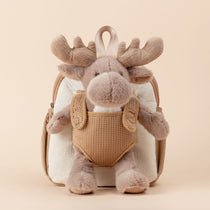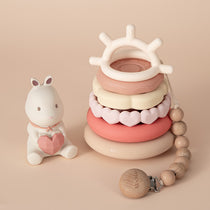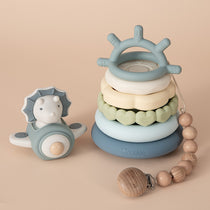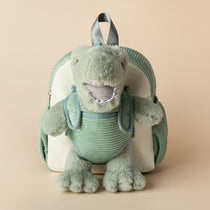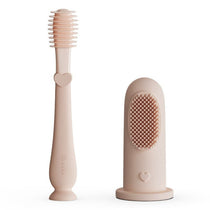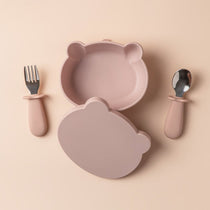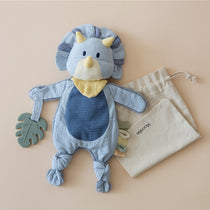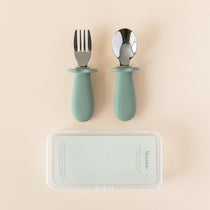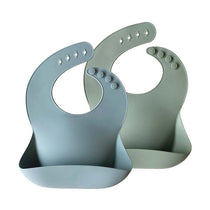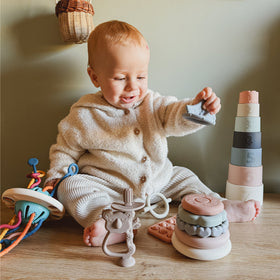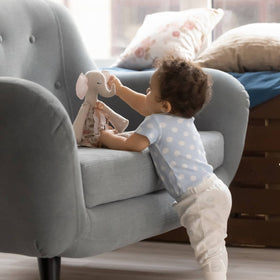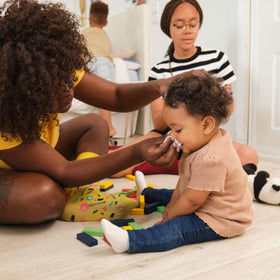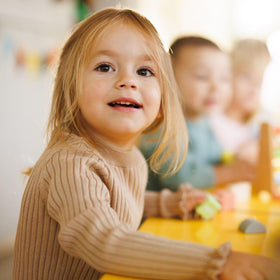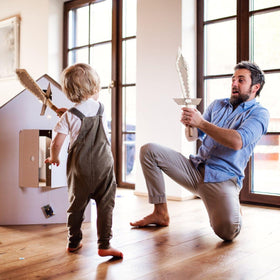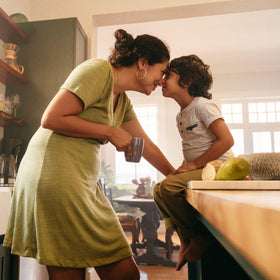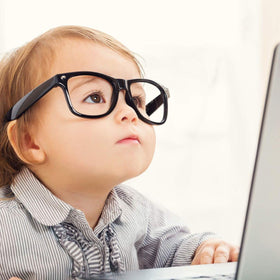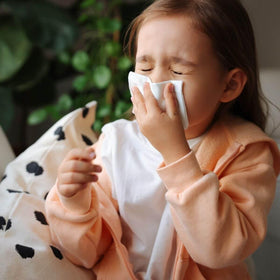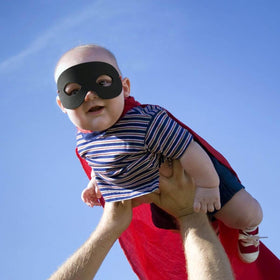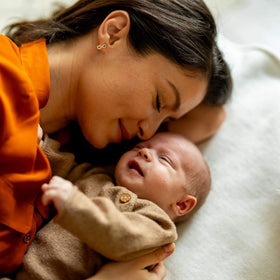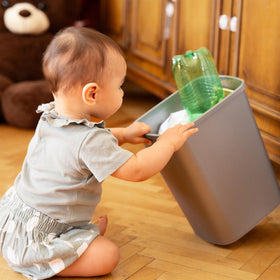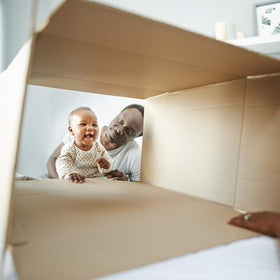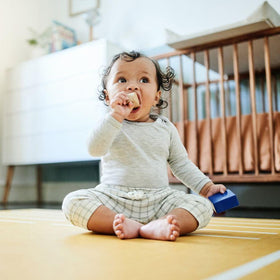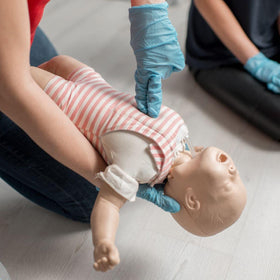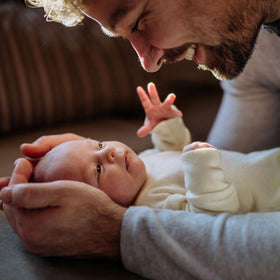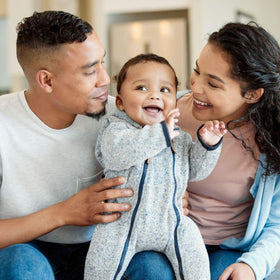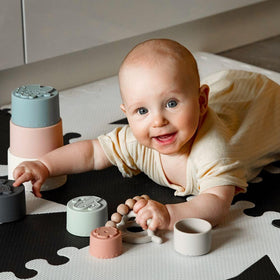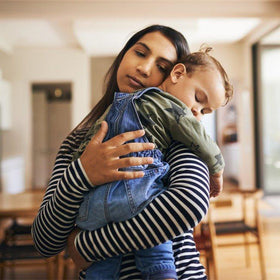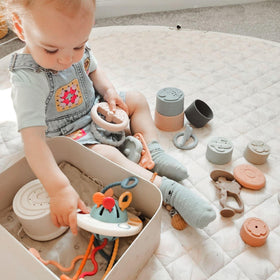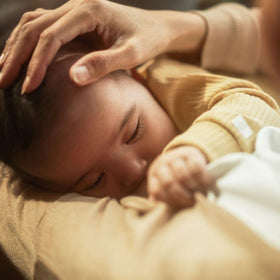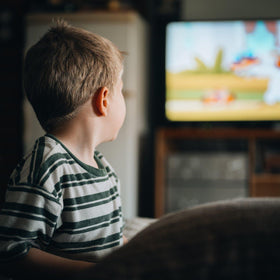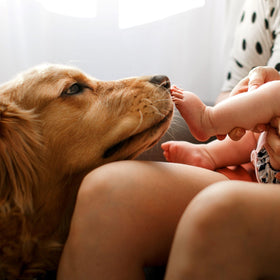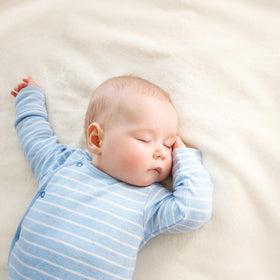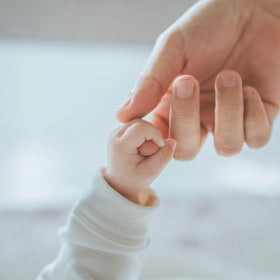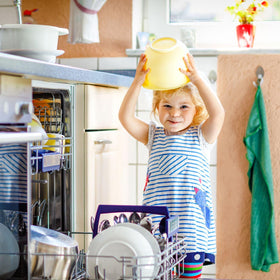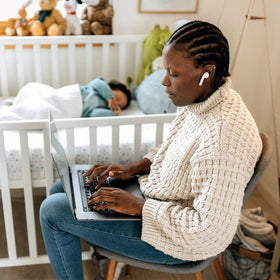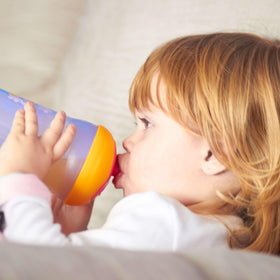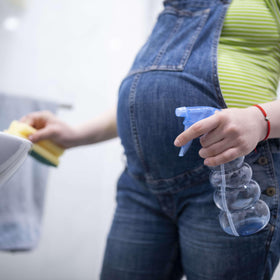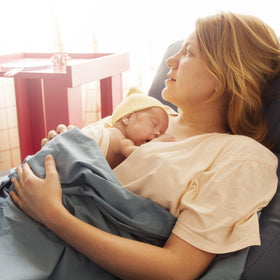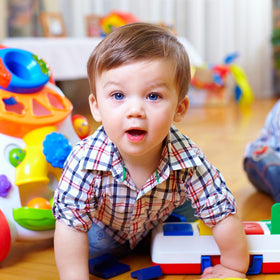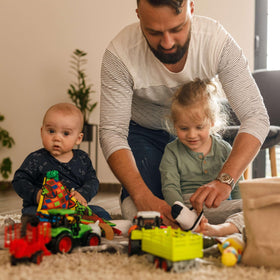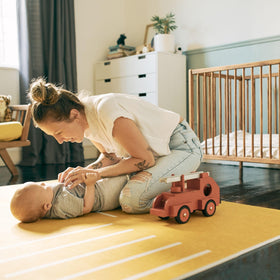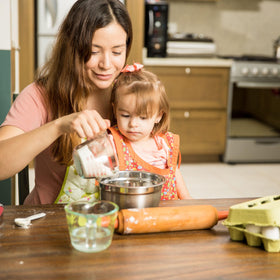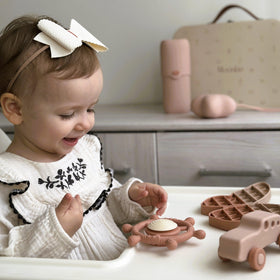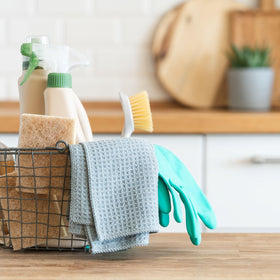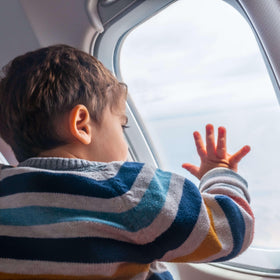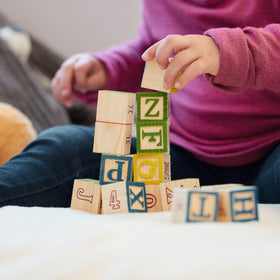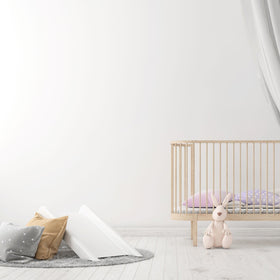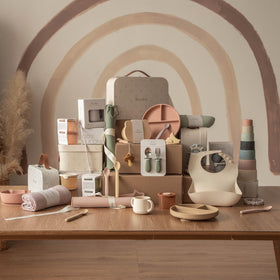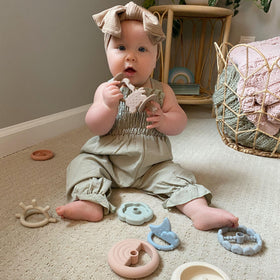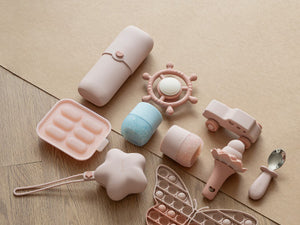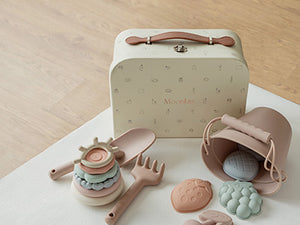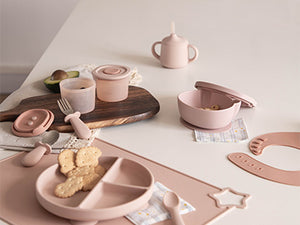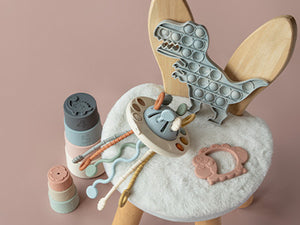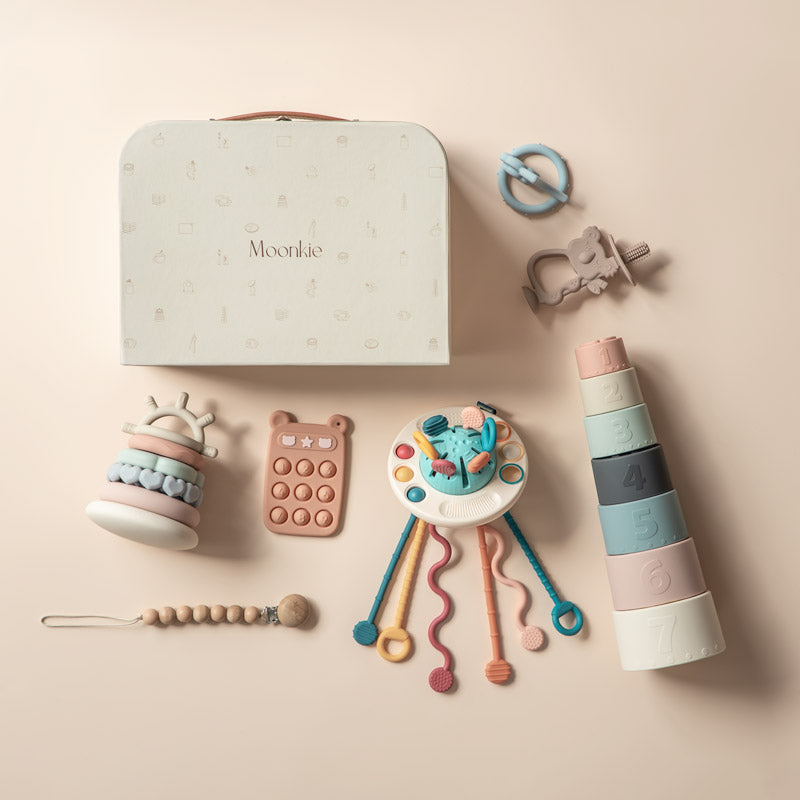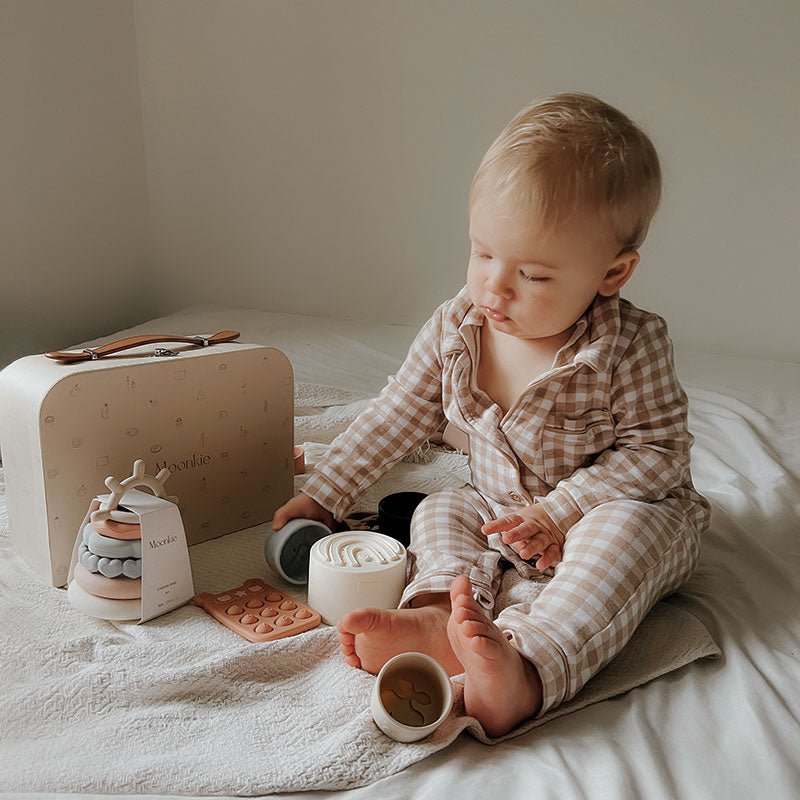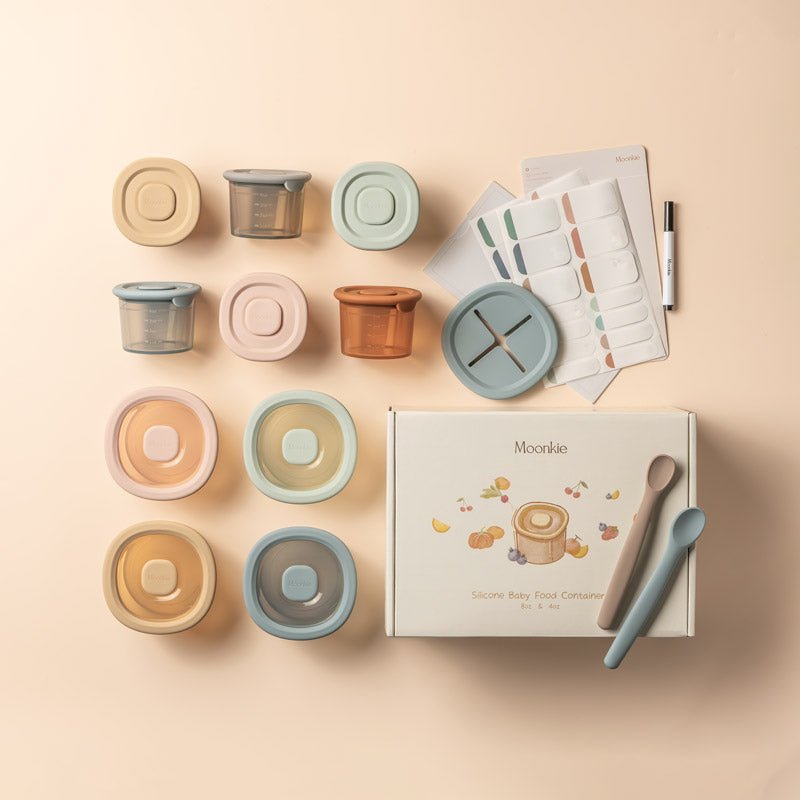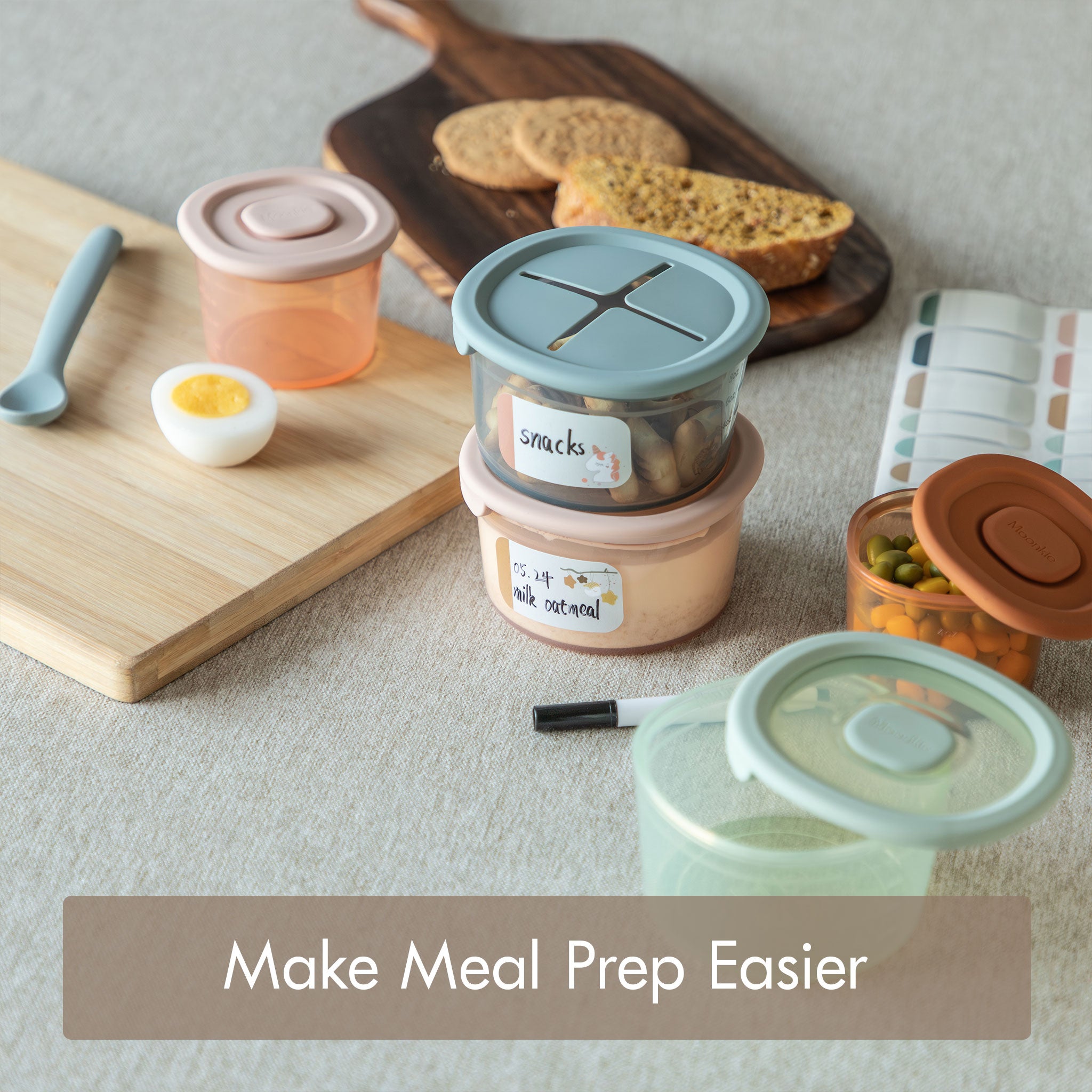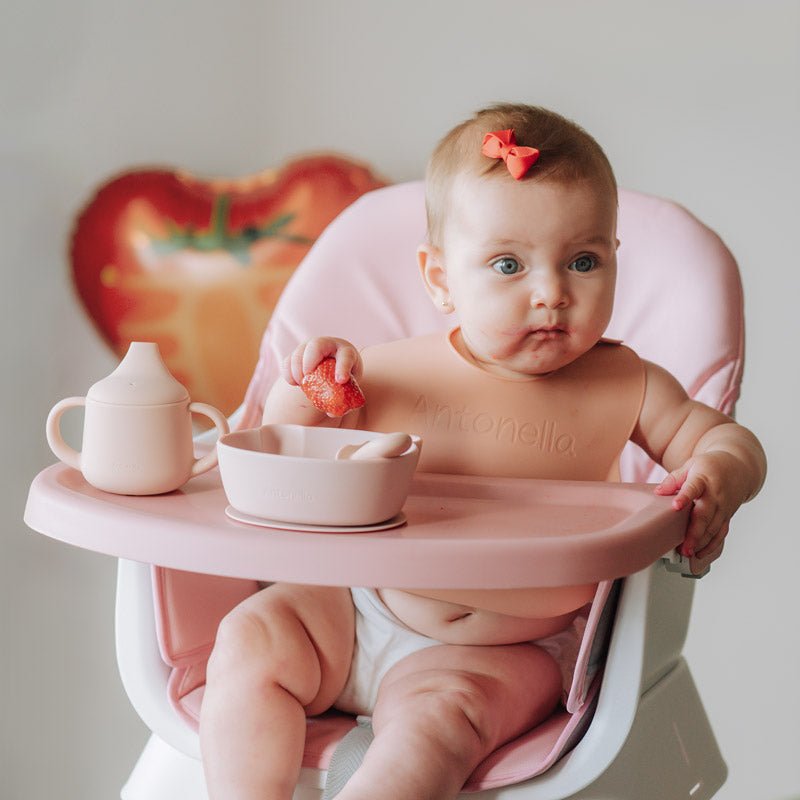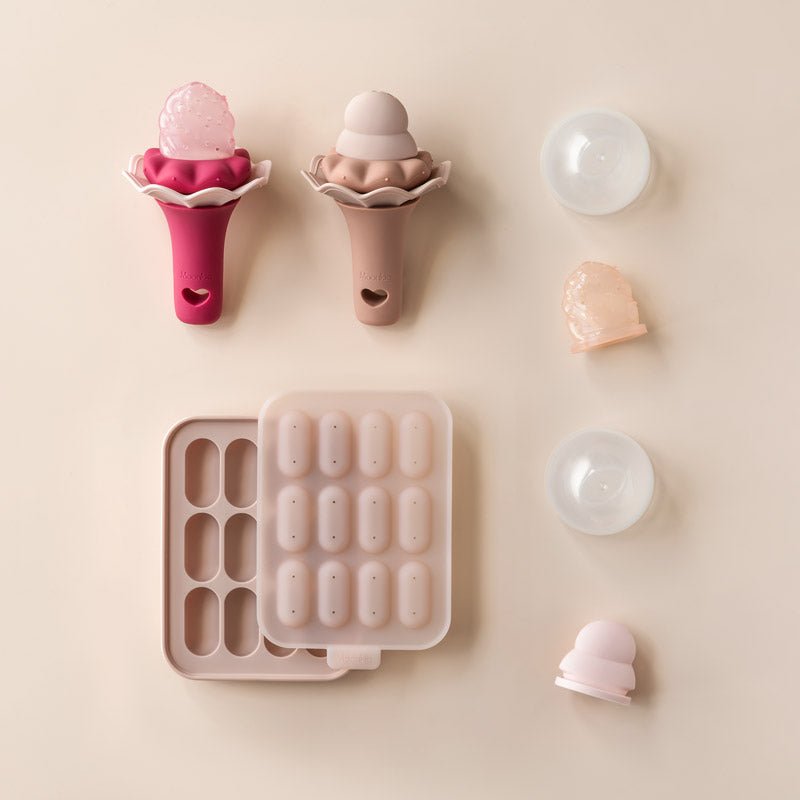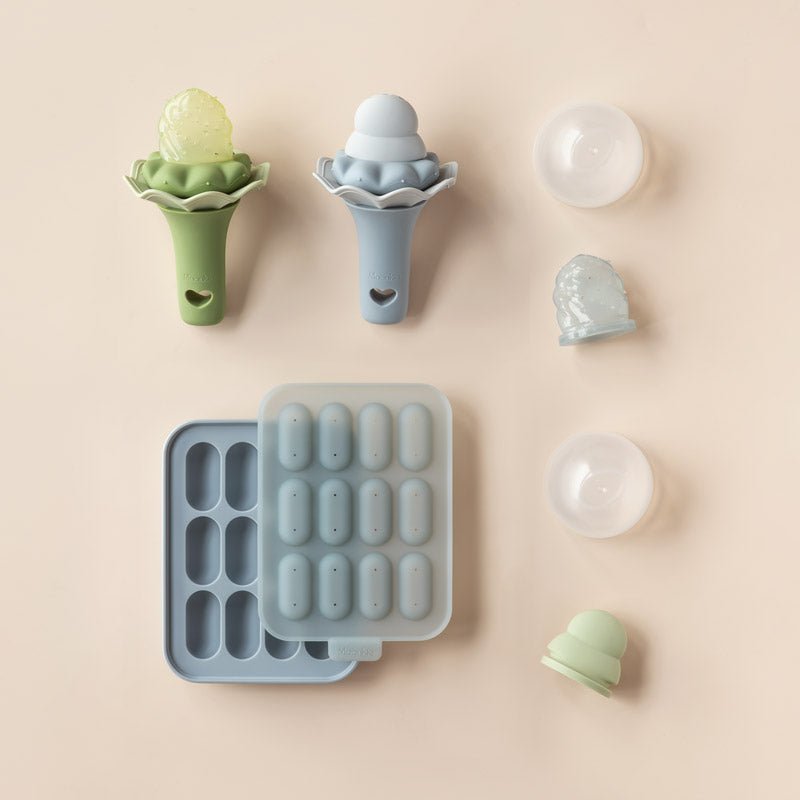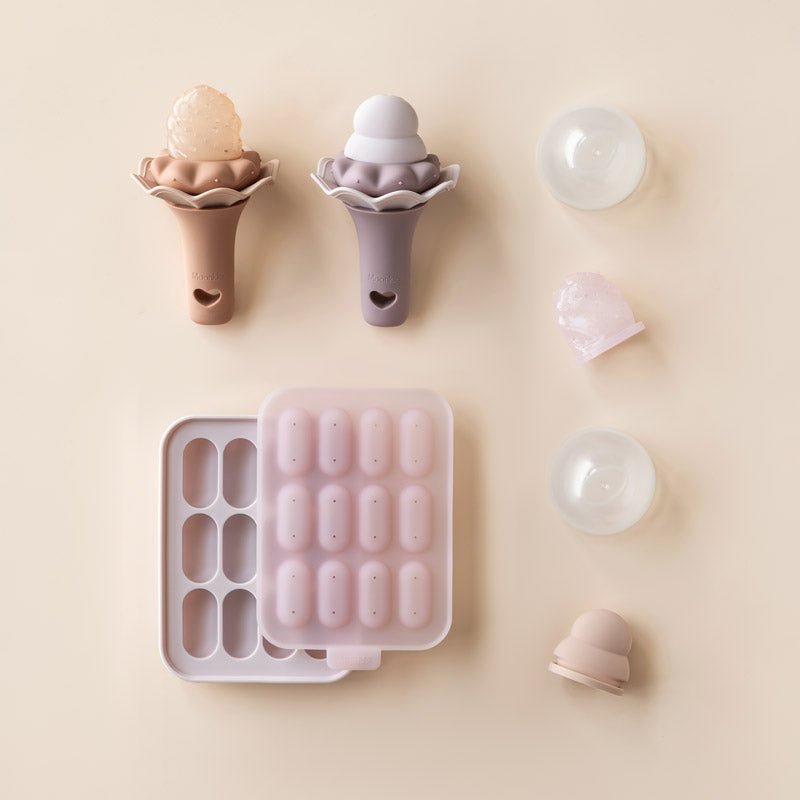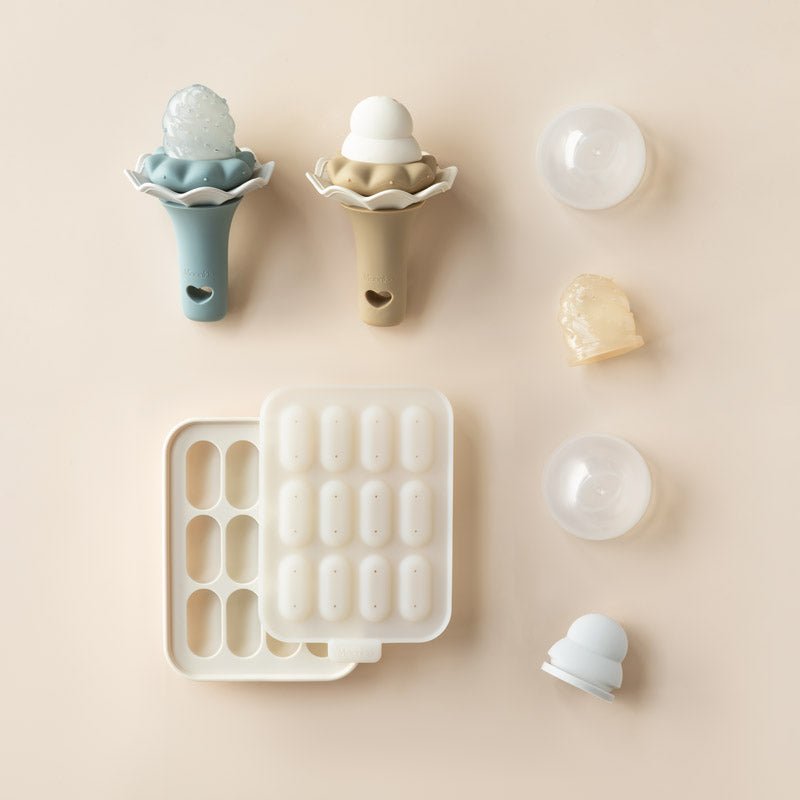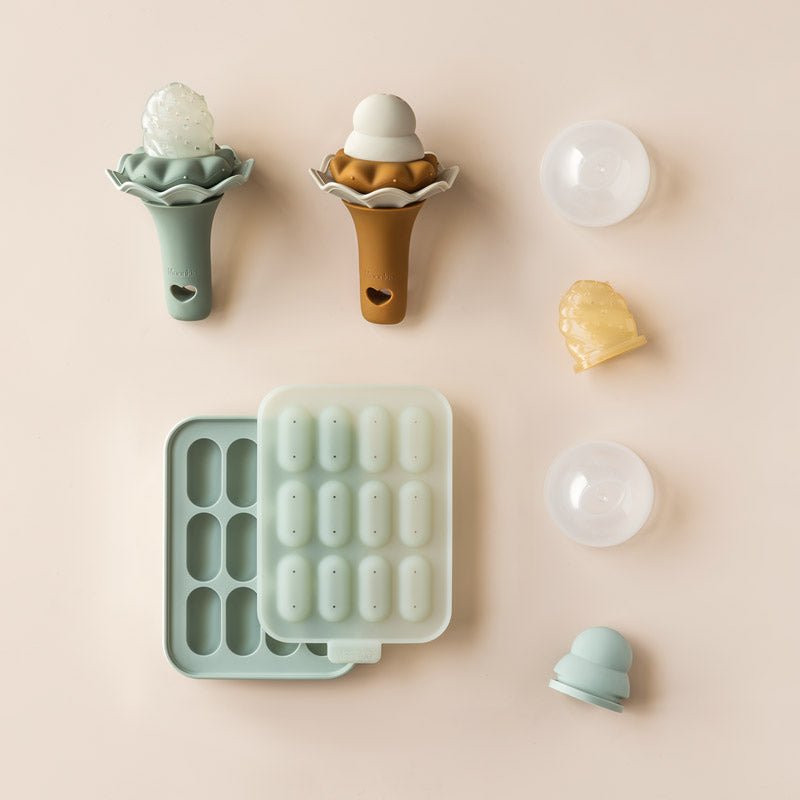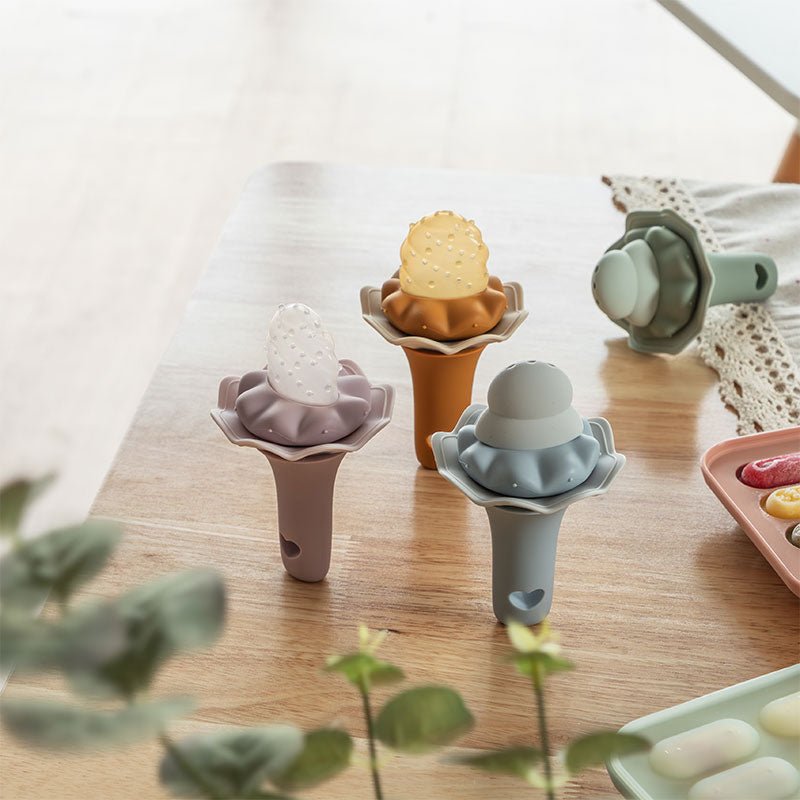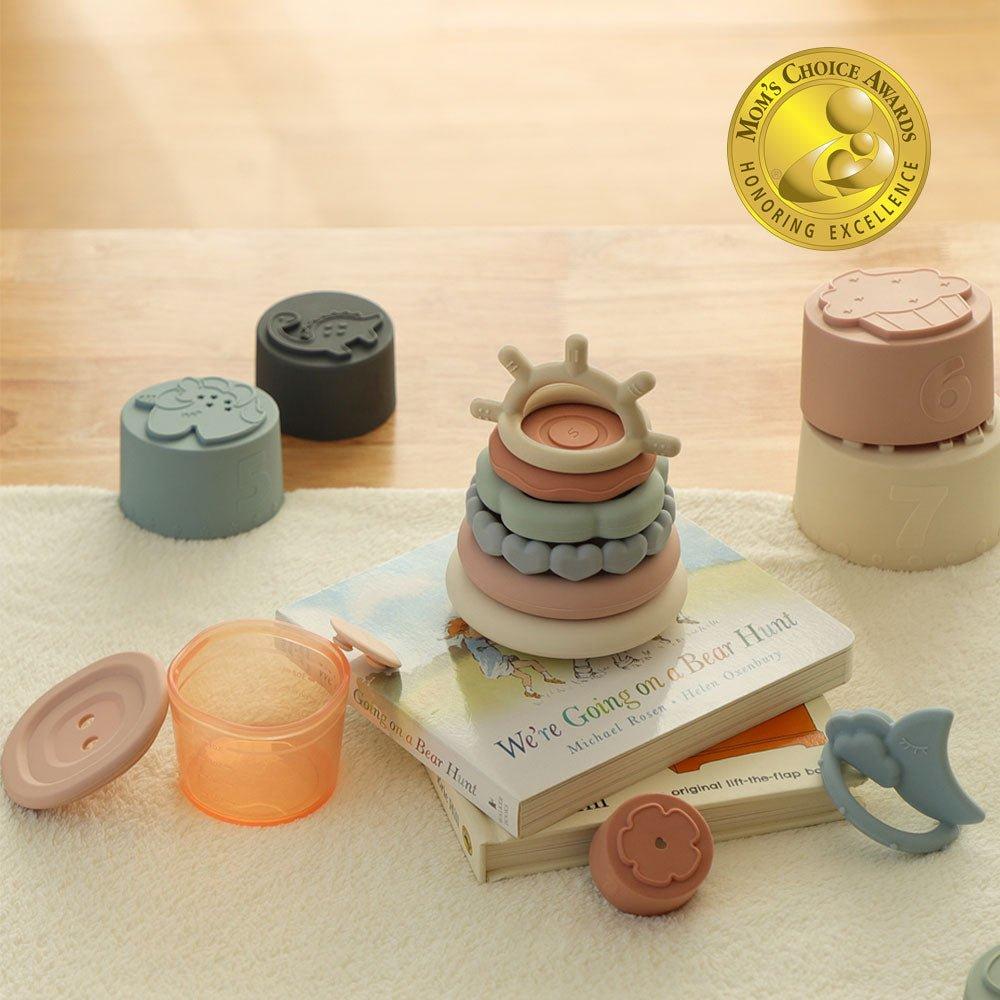
Imagine this: your living area is cluttered with toys and baby gear, and your little one(s) are running around in the chaos. You feel overwhelmed and frustrated, knowing it will take hours to clean up with your kid(s) coming behind you making more messes. You don't have time, energy, or brain space for this! Is all this stuff really necessary?
Tons of stuff is unnecessary for raising your children in a happy, healthy home. You can provide everything your children need and have a reasonably minimalistic lifestyle, but finding that balance requires reflection and experimentation. For example, are you willing to wear your baby instead of placing him in a baby swing?
Striking a balance between minimalism and young kids is possible, but that balance looks different from family to family. Let's look at minimalistic parenting, its benefits, and how to zero in on what your family really needs.
What is Minimalistic Parenting?
Minimalistic parenting involves simplifying your family's life by focusing on the essentials and reducing the excess. It's about creating a home environment that is calming, free of distractions, and promotes creativity and exploration for your little one(s).
Minimalism has a spectrum. Some minimalists live out of a backpack or with less than 100 items, and some minimalists ruthlessly slash stressful people and events out of their schedules but otherwise have a well-decorated home with toys and trinkets for their kids (these folks are not traditional minimalists).
I do not suggest that you become an extreme minimalist or a hermit, of course. Though it would be more entertaining if I took a hard stance, I'm not here to entertain.
Stress is a severe problem in America, with 27% of Americans in a poll conducted for the American Psychological Association in 2022 reporting that they are too stressed to function normally (source). And that was before inflation skyrocketed in 2023 and the presidential election campaigns of 2024 started.
In a world of stress, anxiety, and entities benefiting financially from blasting stressful information at you, it is no wonder that so many parents are feeling overwhelmed at home. By embracing some minimalistic parenting principles, you can reduce stress, save money, and teach your children the value of living with less.
What Are the Benefits of Minimalistic Parenting?
The benefits your family could gain from minimalistic parenting depend on where you start and what principles you choose to implement. Taking slow, thoughtful action steps toward your family's goals in time, environment, and lifestyle could bring lasting rewards.
Generally speaking, most families see relief from clutter, gain more time for meaningful family activities, and save money.
Less Clutter, More Calm
One of the most substantial benefits of minimalistic parenting is that it reduces clutter and creates a more calming environment. When there are fewer toys, clothes, and other baby or household items, there is less to clean up and organize, reducing stress and anxiety and making it easier to focus on what matters most.
Clutter can cause stress and anxiety that, left unchecked, can harm our mental health and productivity (source). Add to that the stress of parenthood, especially that of young children, toddlers, and babies, and you can see why a cluttered home can lead to overwhelm (source).
Less stuff to pick up and manage may not only lead to less anxiety but also more time for family, cooking healthier food, exercising, and hobbies.
More Time for Family
Americans are excellent at stuffing homes and schedules with extras; we almost feel guilty for not having "enough stuff" for our kids to play with or "enough things" to stay busy. Minimalistic parenting seeks to free up more time for family activities, which means saying "no" to extra events, hangouts, and opportunities.
Clutter can be a significant barrier to spending quality time with your family. Just think: how much time do you spend in a week cleaning, organizing, or pushing around stuff?
If you are not constantly cleaning and organizing to "get it together so you can think straight," you could spend more time with the family you work to raise well.
You could spend that time reading, playing, exploring, discovering, having tea parties, stacking legos, or anything else that is meaningful for your kids and creating lasting memories. Babies and young children need their parents to spend time with them.
Since you only have so much time, something has to give, which might as well be the time-consuming extras that are not part of your family's culture. These are different for everyone. For example, my family cut out or back on regular TV, movies, video games, shopping with friends, online deal hunting, and social media.
It's not that we never do these anymore; we just allow ourselves a maximum of four hours a month because our littles see us work online all day. So, we may have a family movie night, but that takes an hour and a half to two hours of that time allowance.
It's not for everyone, but this rule keeps us accountable to very little screen time at the end of the day, ensures we actively play with our littles, and saves us money. Now that we are used to it, honestly, we'd rather do family game nights, crafts, hiking, or yard games anyway!
Saving Money
And hey, if you have rules about how much stuff you allow into your home, then you will have less to buy, which will save you money! By focusing on the essentials, avoiding unnecessary purchases, and investing in durable, multi-stage toys and products, you can reduce spending and avoid debt.

With the cost of raising a child from birth to 18 years old averaging $237,482 these days, saving money by avoiding nonessentials can significantly impact your wallet (source). Now, this figure includes daycare and preschool costs in the early years, so if you plan to keep your littles at home, you'll save even more!
Tips for Creating a Simple and Sustainable Lifestyle
Taking some small steps toward minimalism is freeing when done well. But you've got to be strategic about it: doing too much at once may cause regret, while getting rid of stuff just to buy more will cause a vicious cycle.
Here are some tips from my own journey toward implementing some minimalistic parenting ideas.
Replace Extras with Meaningful Activities
As you take things away, replace them with something else. For example, if you get rid of your TV and the subscriptions you usually pay to watch shows and movies, you'll need a plan for using that new free time.
You could do anything that makes sense with that time and your budget; just make sure it is relevant to your family culture--not just more stuff.
- family board games
- playing music
- reading a book series together
- craft time
- baking for a local charity
- puzzles
- working on a small family business together
- volunteering
- geocaching
- doing random acts of kindness
- playing sports
- doing martial arts
- exercising
- hiking, rock climbing, or cycling
You'll notice that some of these require things, equipment, or subscription fees, while others require time. The point of "replacing stuff" is to replace the excess with something more meaningful. And that "meaningful" could simply be margin or flex time to rest or a family hobby.
Marketing shapes people to buy a product whether they need it or not. If a product will serve your family well, then it is worth purchasing! It's even better if it is sustainably made, durable, environmentally friendly, and has an excellent cost-per-use ratio!
Focus on the Essentials
Your little one needs a safe place to sleep, nutritious food, seasonal clothing, a safe environment, learning opportunities, and your love and attention. Any other material things are extra fluff that will likely not make or break your child's growth and development.
So, instead of buying tons of toys and gadgets, invest in high-quality items that will last for years and can be used for multiple purposes. Depending on what you are willing and able to handle, this could include the following for your baby:
- reusable diapers and wipes
- glass bottles
- wooden or silicone baby toys
- organic cotton or wool baby clothes and blankets
- multi-stage silicone water cups
- open-play toys (blocks, rattles, cups, play dough, etc.)
For a specific essentials list for babies that will last, read The Ultimate Guide to Reusable Essential Baby Products.
For a toddler, buying second-hand clothing, books, and durable, open-play toys is a superb way to focus on the essentials. Your toddler will also likely enjoy crafts, coloring, outdoor activities, and playing pretend with you. Keep it simple!
Buy Products from Sustainably-minded Companies
Find companies with a solid mission and commitment to producing sustainable products that won't need replacing every few months. For example, we design every product here at Moonkie to serve your family from babyhood through toddlerhood and beyond.

We use high-quality, food-grade silicone that is easy to clean and will not break down with sanitizing or break when your fluffy hooligan jealously snatches a baby toy for chewing. Rest assured, Moonkie has your family's health, safety, and environment in mind for every product we make.
Get Creative
Your little one may not need much in the way of material items, but she does need an engaging environment for exploring and learning. You can take her on walks outside, play at the park, meet friends for playdates, and talk about what you see while running errands in town.
At home, you can repurpose items you already have around the house. For example, you can clean out a milk jug and let your little one play with it for a while. You can add water or toys inside for your little one to shake or let her play with it in the bathtub.
You can also create a "rollercoaster" or "race car" with a laundry basket, build a fort out of couch cushions, or make a cardboard box fort. Everyday items to us can be super interesting to little explorers!
Another option is to invest some money into open-ended, durable toys that your little one will play with for years (and her little ones may play with one day!). Examples of this include wooden blocks and stacking cups.
You can read more about sustainable (by design and interest) baby toys here: Sustainable Baby Toys on a Budget: Affordable Options for Eco-Conscious Moms.
Ask Friends and Family to Stop Buying Stuff
Yep, I said it. A considerable portion of the clothes and toys my kids got early on were from friends and family. This was a blessing at first, but every birthday and Christmas brought a whole new round of stuff. After a couple of years, I had to stop the relentless cycle of more coming in than going out.
I created an Amazon wishlist of what the kids could use or would enjoy and suggested family passes to the local zoo, museums, or kid-friendly events nearby. Nowadays, before someone buys something, they just ask what we are saving up for or what my kids specifically asked for.
Kids' toys are more manageable from my end, and the kids enjoy what they have, use their imaginations all day, and embark on adventures to whatever we have family passes for regularly.
Though I am not a full-on minimalist, employing some minimalistic parenting principles has freed up space, time, and money for my family.
Teach Your Kid From a Young Age
You can do everything in your power to shield your kid from marketing or the shininess of new stuff, but it will get to her eventually, and it is powerful. Everything from fast food kids' toys to commercials to product pictures in the store will influence your little one and her desires.
As the parent, you can teach your little one about wants and needs: toys, influence, sustainability, sharing, saving, education, and donating are all hard lessons to teach.
Sometimes, teaching wants and needs means letting her buy that $5 plastic toy and watching her break it as soon as she walks out of the store. Compare that later to $5 spent on food, a ticket, or putting it in a savings jar for a family vacation. That's a lesson she can refer back to later.
Ultimately, if your little one grows up watching you balance minimalistic practices and parenting, she will likely understand it better and see the value of your actions. It's not about being a meanie; it's about quality over quantity in life.
In a Nutshell
Balancing minimalism and young kids can be challenging, but it is possible. Focus on the essentials, get creative, buy from sustainably-minded companies, ask those around you to participate, and teach your little one from the get-go as you can to create a simple and sustainable lifestyle.
Minimalistic parenting has many benefits, like less clutter, less stress, more family time, and saving money, but it has to be done thoughtfully. Take your time, make each decision count, and enjoy the benefits of a more streamlined home!

